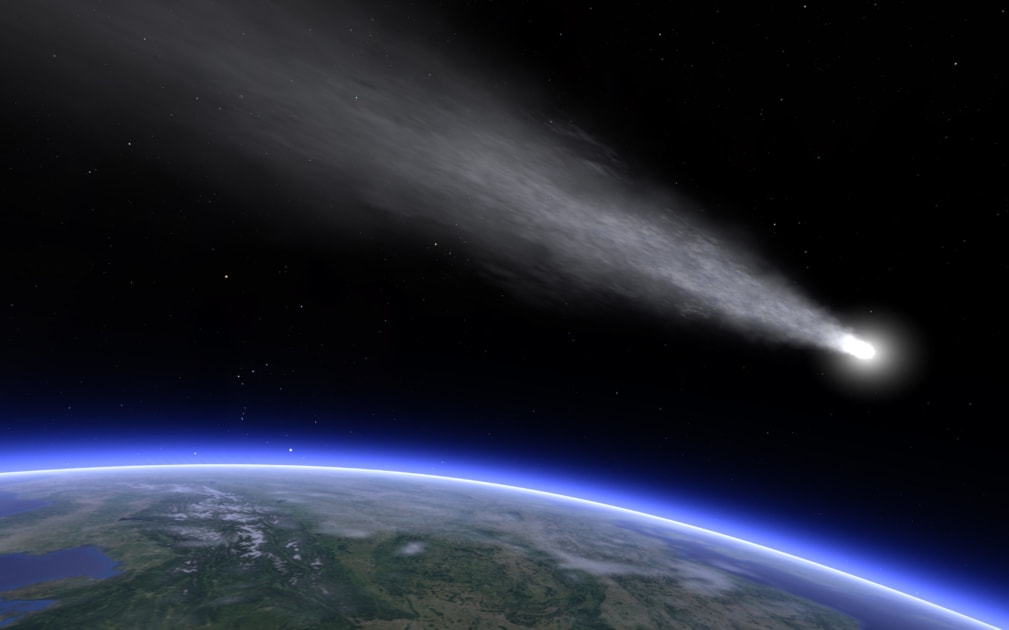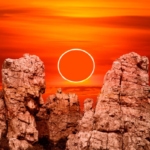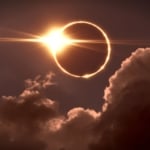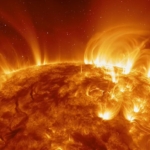The Eta Aquarid Meteor Shower – Will you Spot An Earthgrazer?
The Eta Aquarid meteor showers are exciting because they are the dust left behind by the famous Halley's Comet, some of which can be quite impressive!

If you missed out on seeing Halley’s Comet in 1986, you’ll have an opportunity to see pieces of the comet in early May (though the comet itself will not return to the Sun’s vicinity until the summer of 2061). This is because Halley’s Comet’s orbit nearly intersects the Earth’s orbit during the first week of May. Although the comet is not there now, the dusty debris left in the wake of previous apparitions of this famous comet flows along like a river of cosmic rubble.
When Earth passes through this region of space these tiny particles crash into our atmosphere at high speeds and are consumed in a fiery streak of light—a meteor, or “shooting star,” is the result.
When Is The Eta Aquarid Meteor Shower?
The Eta Aquaria Meteor Shower activity peaks during the early morning of May 6, in the predawn sky. Unfortunately, it is one of the most difficult meteor showers to view in the Northern Hemisphere and the bright light of the Full Flower Moon on May 5 will make shooting stars nearly impossible to detect.
The meteors appear to spill out of the “water jar” of the Aquarius constellation. They are named after one of the brightest stars in Aquarius, Eta Aquarii. From mid-northern latitudes, the radiant (from where the meteors appear to emanate) rises at about 3:00 a.m. local daylight time, scarcely two hours before morning twilight begins to interfere. At peak activity, from latitude 26-degrees north—that’s around Brownsville, Texas, or the Florida Keys – about a dozen shower members can be seen per hour by a single observer with good sky conditions. But that number falls to practically zero north of latitude 40-degrees.
But don’t give up hope, for you still might want to check out the sky for the chance at sighting a very special kind of meteor: an Earthgrazer.
What is an Earthgrazer?
Earthgrazers are meteors that skim the top of Earth’s atmosphere like a stone skipping across the surface of a pond. They appear when the radiant of a meteor shower is near the horizon, spewing meteoroids not down, but horizontally overhead.
But Earthgrazers are rare. An hour’s watching might produce no more than one or two at most, but that’s plenty. Earthgrazers are colorful and gracefully slow. People who are lucky enough to see one talk about it for years. Looking for Earthgrazers is simple: Spread a blanket on the ground, lie down and look up. A reclining lawn chair facing southeast works just as well. Eta Aquarid Earthgrazers streak overhead, flying generally southeast to northwest.
The Eta Aquarids are considered to be the best meteor shower of the year—if you live in the Southern Hemisphere. Up in our latitudes, the constellation of Aquarius remains very low in the sky at the break of dawn, so you likely would not see more than a handful of shooting stars.
Of course, the “draw” of the Eta Aquarids is that they are the dross, or “junk” left behind by Halley’s Comet. So if you see any of these meteors, you can at least say that you sighted pieces of Halley that broke off its nucleus from one of its previous visits to the solar system!
Think of the Eta Aquarids as interplanetary postcards from the reigning king of comets, currently coasting out beyond the orbit of Neptune.
What’s In Store for 2023?
Under ideal conditions, average rates tend to be 20 per hour in the Northern Hemisphere and 40 per hour in the Southern Hemisphere. However this is not a good year to see this meteor shower as the full Moon will obscure most of it.
Join The Discussion
Have you ever seen the Eta Aquarius before?
Let us know in the comments below!

Joe Rao
Joe Rao is an esteemed astronomer who writes for Space.com, Sky & Telescope, and Natural History Magazine. Mr. Rao is a regular contributor to the Farmers' Almanac and serves as an associate lecturer for the Hayden Planetarium in New York City.






I live in Arkansas i hope to see a tiny piece of this.